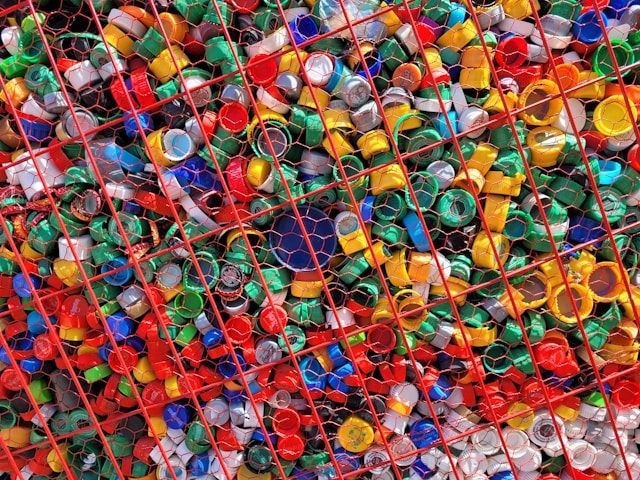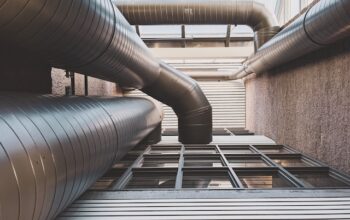Key Takeaways:
- The intricate process of injection molding is integral to manufacturing diverse products, making mold design a fundamental determinant of product success.
- Technological evolutions, notably CAD/CAM and 3D printing, have revolutionized injection mold design, offering unprecedented precision and efficiency.
- Environmental sustainability has become a significant factor in mold design, with the industry shifting towards greener practices and materials.
- Cost efficiency and the pursuit of innovation are expected to propel the future of injection molding toward even more advanced and user-centric designs.
Table of Contents:
- Introduction to Injection Molding
- Historical Perspective of Injection Molding
- Injection Mold Design Basics
- Advanced Technologies Shaping Modern Injection Mold Design
- The Role of Precision in Injection Mold Design
- Sustainability in Injection Mold Design
- Cost Efficiency and Injection Mold Design
- The Future of Injection Mold Design
- Injection Mold Design’s Influence on End-User Experience
- Concluding Remarks on Injection Mold Design
Introduction to Injection Molding
In modern manufacturing, the technological marvel of injection molding holds a position of considerable importance. This method, pivotal in fabricating a wide array of plastic components, showcases the transformative fluidity of molten materials shaping into functional items within a design mold. The ingenuity it affords designers and engineers has enabled the conceptualization and realization of intricate designs with remarkable consistency and scale. As the foundation upon which countless products rely, injection mold design stands as an art form, harmonizing precision engineering with the creativity of industrial design. This blend of art and science empowers the leap from abstract ideas to tangible innovations that populate markets and alter daily lives.
Historical Perspective of Injection Molding
The journey of injection molding from its embryonic 19th-century roots to its current status as the backbone of manufacturing prowess is a testament to human ingenuity. The historical timeline of mold design reveals a fascinating progression from primitive, manual operations to the sophisticated, automated systems used today. Each era of its storied evolution brought incremental improvements that expanded the capabilities and applications of the process. At the intersection of experience and modernity, injection molding continues to benefit from a rich legacy that stretches back to its first pioneering steps, which enabled mass production and became a catalyst for widespread material availability and consumption patterns we recognize today.
Injection Mold Design Basics
At its core, injection mold design is a meticulous exercise of crafting the blueprints for successful manufacturing. This crucial phase entails a nuanced blend of scientific principles and practical considerations, from understanding thermodynamics and fluid mechanics to anticipating the behavior of polymers under varying conditions. Each mold is a carefully crafted tool constructed to achieve uniform fill, efficient cooling, and effortless ejection of the final product. Successful mold design synthesizes these elements to assure the structural integrity of the molded part and the aesthetic finesse demanded by consumer-oriented markets. The designer’s profound grasp of material properties is essential to this synthesis, an understanding that guides every decision from the drafting table to the production floor.
Advanced Technologies Shaping Modern Injection Mold Design
As industries continue to adapt and grow, injection mold design has been particularly receptive to technological innovations. The seismic shift in design techniques, arguably paralleled by no other development, came with the emergence of CAD/CAM systems. This digital revolution rendered manual drawing boards practically obsolete, endowing designers with advanced software capable of intricate simulations and precise calculations. This technology’s power lies in its ability to streamline workflows, reduce errors, and produce molds that meet rigorous standards with less resource expenditure. Coupled with this are breakthroughs in rapid prototyping, mainly 3D printing, which have vastly accelerated the design cycle, enabling faster iterations and product-to-market transitions. An in-depth exploration of such technological strides can be found in the scholarly article, Recent Developments in CAD/CAM Technologies, highlighting digital tools’ transformative impact on modern engineering practices.
The Role of Precision in Injection Mold Design
The significance of precision in injection mold design cannot be overstated. Here, we delve into a world where fractions of a millimeter determine the success or failure of an entire product line. Molds must be constructed to exact specifications, ensuring that each cycle of the injection molding process yields components that flawlessly embody the original design intent. This dedication to precision facilitates aesthetic beauty and functional harmony, as high-precision molds contribute to the longevity and durability of the parts they create. As the industry progresses, the standards for precision continue to escalate, driven by consumer demands and the relentless pursuit of perfection.
Sustainability in Injection Mold Design
The zeitgeist of our era has placed an ever-growing emphasis on sustainability and environmentally-friendly manufacturing processes. The injection mold design industry has responded to this call to action by innovating to conserve resources, reduce waste, and promote recyclable and biodegradable materials. Practices such as integrating life cycle assessments into the design process, striving for thinner walls to reduce plastic usage, and optimizing design for end-of-life disassembly are reflections of this conscientious shift. Highlighting the importance and potential of these sustainability initiatives, the informative resource from Sustainable Injection Molding offers insights into how the sector is transforming to meet and surpass environmental standards.
Cost Efficiency and Injection Mold Design
Although innovation and sustainability are critical, so is the pursuit of cost-efficiency – balancing the calculus of quality, investment, and return. Mold design is an intricate dance of compromise and ingenuity, seeking methods that streamline production and reduce material consumption without forfeiting the integrity or appeal of the finished product. This financial prudence extends beyond the initial design phase, affecting the product’s lifespan – from manufacturing to assembly and eventually to its market performance. Designers and manufacturers can continually r, refine their approaches, embracing cost-saving automation, material science advancements, and operational streamlining to create molds that embody frugal genius.
The Future of Injection Mold Design
As we look to the horizon, we envisage a future for the injection mold design industry rich with innovation and marked by constant progress. Visionaries in the field anticipate the deeper assimilation of AI-driven analytics, which will further optimize design processes and nurture the creation of intelligent molds capable of self-correction and adaptive manufacturing pathways. In parallel, exploring new materials that offer enhanced properties and environmental benefits will surely redefine the boundaries of what is achievable in mold design. These prospects exemplify the continued evolution of an industry that thrives on pushing the envelope and challenging the status quo.
Injection Mold Design’s Influence on End-User Experience
Injection mold design, while often unseen by the layperson, has an indelible impact on the user experience. The meticulous design of a mold directly translates into the tactile quality and functional reliability of the end product. Design intricacies such as the feel of a grip, the smooth action of a hinge, and the snug fit of interconnected parts are all contingent on the precision of the original mold. As designers strive to cater to refined consumer tastes and heightened functional requirements, their role in sculpting user experience becomes ever more poignant. This relentless dedication to user satisfaction drives designers toward continuous improvement and innovation.
Concluding Remarks on Injection Mold Design
In conclusion, the seemingly niche world of injection mold design is the bedrock for many industries that shape modern life. From medical devices to automotive components and consumer electronics, the influence of thoughtfully designed molds is pervasive. As technologies advance and the impulses of society shift towards more sustainable and user-centric products, the charge for designers and manufacturers is clear – to remain adaptable, innovative, and relentlessly committed to the pursuit of excellence. Embracing the heritage and the prospects of this dynamic field comes with the promise of continued relevance and success.



